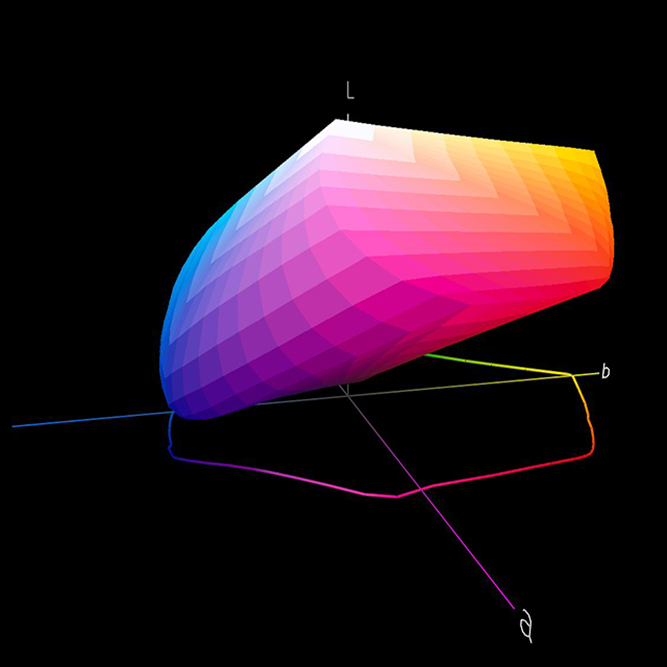
A set of quality criteria is employed to assess the relatively recent category of Fine Art Printings on paper from our Digital FineArt collection. The importance of the respective criteria depends on application. In the case of art reproductions, the most important criteria are surface structure, colour gamut (surface, the intensity of colours), density and feel. In the photographic section, importance is placed on the Dmax value (detail resolution in dark areas), high degree of white and opacity.
In general, the most important features are ink limit, colour gamut, density and resistance to ageing. All types of paper produced by Hahnemühle in the Digital FineArt collection meet the highest quality standards, and enjoy world-wide renown.
Click of one of the following headlines to learn more
Densitometric measurement is used to determine colour density. The higher the value, the more intense and radiant the colours.
Each type of paper should be light resistant for at least 100 years. Only a very few – preferably, none – should have a negative reaction to brand-name inks (especially pigment inks). In this regard quality papers undergo specialist tests at the Wilhelm Research Institute, or at the FOGRA Research Institute.
All papers designed for archival storage are acid-free, which makes them highly resistant to ageing. The paper should also be lignin-free, which means it should consist of linters or alpha-cellulose. Lignin-free paper does not yellow.
Ink Limit is the value which determines the threshold to which the medium can take up ink in a way that assures sharpness of edges. The higher that value, the higher the colour precision of the print and better colour brilliance. High-quality papers have an ink limit value exceeding 200%.
Resistance to bleed (not showing on the reverse side of the printout) is a very important feature – especially in the case of double-sided printing, as in photographic or painting albums. This feature should be found in every paper designed for such purpose.
FineArt paper should feel like high-quality artistic paper . The surface must also be water-resistant.
The optical properties of paper are determined by its colour (naturally white, white, bright white) and by its surface structure. The paper is ideal when the surface structure of the reproduction is the same as the surface structure of the original work of art. Many artists prefer to use papers with various surface structures in order to emphasize the artistic statement of the picture. Others choose paper with silky-smooth surface. A paper quality that is too smooth usually makes the product seem "cheap”.
The constantly high quality is a necessary precondition for obtaining continuous printout results, especially in the case of making additional print runs or limited editions.
Large colour gamut is necessary to guarantee a faithful reproduction of an art work or a photograph. The colour gamut can be visually presented using a system of coordinates. For this purpose, the saturated colours (cyan, magenta, yellow, red, green and blue) are measured with spectrometer and presented on the coordinate system in relation to a specific surface. The bigger that area in the visual space, the larger the colour gamut, which renders the images more precise and more radiant.
The paper thickness, or volume, determine its feel (tactile properties), and thus defines the quality of the work of art or photography. High-weight paper (> 300 g/m²) is recommended particularly for large-size artistic reproductions, whose originals were made on strong paper. (The exception: reproductions on rice paper or on other special papers).
Opaqueness of paper. This feature is particularly important in the case of inkjet paper, as it is intended for double-sided printing, e.g. for albums with photographs and painting, as well as for works of art mounted and presented against a dark background. The higher the opacity value, the less transparent the paper is. We recommend the choice of paper with opacity > 96% (DIN 53146).